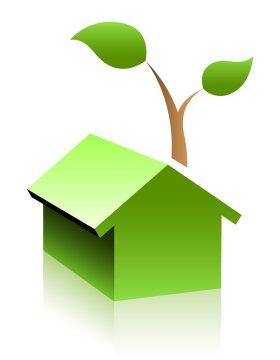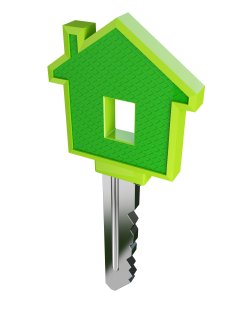Qualicum Beach, BC Canada (250) 667-0719
Green Homes
Qualicum Beach Parksville Nanoose Bay Area

Green Homes, Tiny Homes
The Tiny Home is a lifestyle.
We are familiar with mobile homes, travel trailers, motorhomes, campers and converted vans, but the one lifestyle people resist accepting, is tiny home ownership.
Energy Efficient Rebate Programs
For an up-to-date list of all the various 2021 energy-efficient rebate programs available in BC, see the following link to Live Smart BC: Live Smart BC Incentives.
Five Ways to a Greener Home
According to Natural Resources Canada 17% of all energy used in Canada goes toward running our homes. Consequently, the potential for substantial energy savings is high, provided homeowners take the necessary steps. The benefits apply particularly to older homes; it is estimated that homes older than 25 years have the potential to save an average of 35% of the energy use. Here are five ways savings can be made.
1. Replace Bulbs
Energy-efficient lighting design principles include the following:
- More light is not necessarily better: light quality is as important as quantity
- Match the amount and quality of light to the performed function
- Install task lights where needed and reduce ambient light elsewhere
- Use energy-efficient lighting components, controls and systems
- Maximize the use of day-lighting.
Here are some basic methods for achieving energy-efficient indoor lighting:
- Install florescent or LED light fixtures for all ceiling- and wall-mounted fixtures that will be on for more than 2 hours each day, such as kitchen and living room, bathroom, hallway, and other higher-demand locations.
- Consider installing fluorescent or LED fixtures, rather than using fluorescent or LED replacement lamps in incandescent fixtures.
- Use CFLs or LEDs in portable lighting fixtures that are operated for more than 2 hours a day.
- Use ENERGY STAR® labeled lighting fixtures.
- Use occupancy sensors for automatically turning on and off your lights as needed.
- Consider light wall colors to minimize the need for artificial lighting.
- If you are using recessed lights in a ceiling with an unconditioned space above it, use only CSA and/or Underwriters Laboratory (UL) approved fixtures that are airtight, are IC (insulation contact) rated, and meet ASTM E283 requirements.

2. Look for Energy Star
Energy Star appliances make a big difference to the efficiency of you home. Refrigerators certified under the program must be at least 15% more efficient than federal minimum energy-performance standards, which they typically achieve by using a more energy-efficient compressor and better insulation than conventional models. Energy Star standard-size freezers must exceed minimum energy performance standards by a least 10%, while compact models must beat them by at least 20%. Qualified dishwashers must outperform the standard by at least 25%. Many use "smart" sensors that adjust the wash cycle and amount of water to match the load, and may also have an internal heater.
3. Insulate Your Water Heater
About 15% of a typical house-hold energy bill goes to heating water. The water-heater is one of the biggest energy consumers in many Canadian homes, second only to the furnace. If you've got an older hot-water appliance, you can save by insulating the heater itself, the first three meters on cold-water pipes and the first two meters on hot water pipes. Also, many water-heater manufacturers set the temperature of the tank to 60 degrees C (140F), which you can reduce to as low as 55 degrees C (130F).
4. Reduce Your Water Consumption
Look for ways to reduce your water use; a low-flow shower head can cut your water use in the shower by over 30%, and installing tap aerators can give you the same pressure with less water flow. You can reduce the energy you use for a load of laundry by 93% by washing and rinsing your clothes in cold water. You can also reduce cold-water use by installing a low-flow toilet.
5. Retrofit Older Homes
Older houses can usually benefit from retrofitting to keep the heat in. Adding R-40 insulation, caulking, weather stripping, improving windows and doors can all save money and energy. Poorly insulated attics are a good candidate for improvement; if yours has less that 15 cm (6 inches) of insulation, it is worth putting more in. Insulating basements will also cut heat loss.






























































 Amazing Places
Amazing Places Qualicum Beach Day
Qualicum Beach Day


